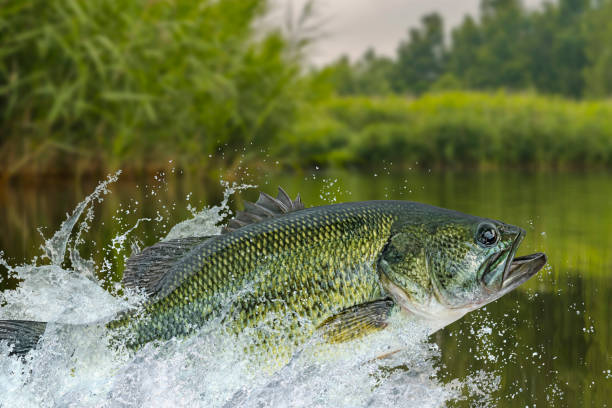The Black Sea Bass: A Popular and Sustainable Fish Species
The Black Sea Bass, also known as Centropristis striata, is a popular and important species of fish that is native to the western Atlantic Ocean, ranging from Maine to Florida. These fish are valued by anglers and commercial fishermen alike for their firm and flavorful flesh, and have also become an important species in aquaculture.
Physical Characteristics
The Black Sea Bass is a medium-sized fish, typically reaching lengths of 10-12 inches and weighing between 1 and 3 pounds. They have a dark, almost black coloration on their back and upper sides, with a lighter coloration on their belly. These fish have a large head and a long, tapered body, with a single dorsal fin and a tail fin that is slightly forked.
Temperament and Behavior
Black Sea Bass are typically found in rocky or reef habitats, and are known for their territorial behavior. These fish are active predators, feeding on a variety of small fish, crustaceans, and other invertebrates. They are also known to be long-lived, with some individuals living up to 20 years.
Uses and Applications
Black Sea Bass are highly valued for their firm and flavorful flesh, which is often compared to that of red snapper or grouper. They are popular among recreational anglers, and are also an important commercial fishery species. In recent years, the Black Sea Bass has become an important species in aquaculture, as they are relatively easy to raise and have a high market value.
Conservation and Sustainability
The Black Sea Bass is considered to be a relatively sustainable fishery species, with well-managed stocks in many areas. However, like all fish species, they are susceptible to overfishing and habitat loss. Efforts are ongoing to monitor and manage Black Sea Bass populations, including size and bag limits for recreational anglers, and catch quotas for commercial fishermen.
In recent years, the aquaculture of Black Sea Bass has emerged as a potential solution to alleviate pressure on wild populations. Farm-raised Black Sea Bass are typically raised in recirculating systems, which use less water and reduce the risk of disease transmission to wild populations.
Conclusion
The Black Sea Bass is a popular and important fish species that is valued for its firm and flavorful flesh. These fish are an important part of both recreational and commercial fisheries, and are also an emerging species in aquaculture. Sustainable management practices are important to ensure the long-term viability of Black Sea Bass populations, both in the wild and in aquaculture settings.


Comments
Post a Comment